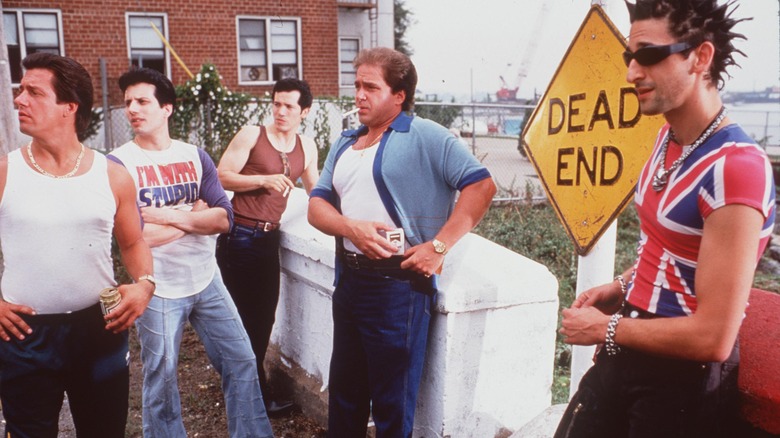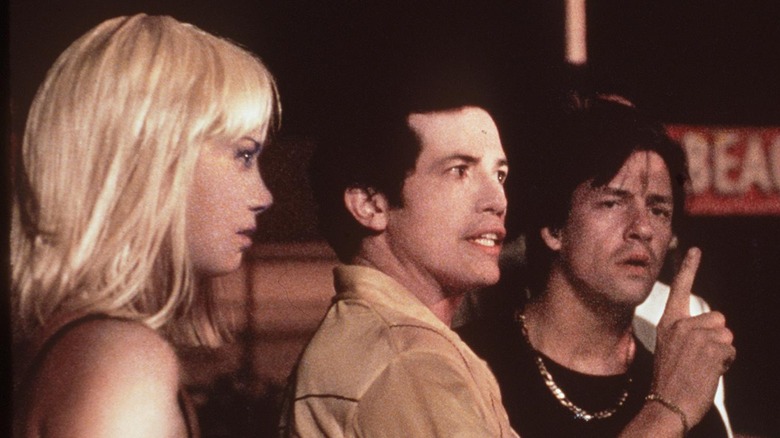How Accurate Is The Movie Summer Of Sam?
Before there was an endless buffet of true crime podcasts to binge while cleaning the house, the morbidly curious had to get their murder-mystery rocks off the old-fashioned way: through movies.
In 1999, 22 years after serial killer David Berkowitz, aka The Son of Sam, unleashed a deluge of chaos on the streets of New York City, Spike Lee's "Summer of Sam" a fictionalized interpretation of these events, hit box offices. The appetite for true crime had yet to hit the fever pitch of today, however, the profanity-laced controversial film still found an audience for its story.
Pulitzer Prize-winning film critic Roger Ebert gave "Summer of Sam" 3.5 out of 4 stars, "[Spike] Lee has a wealth of material here, and the film tumbles through it with exuberance." Despite Ebert's favorable review, Spike Lee's film has fans divided, with one Washington Post film critic calling it a "pedestrian-looking mishmash of a movie."
Love it or hate it, there's no denying that there is a grotesque interest in these types of real-life horror stories. While it's difficult to parse whether society's collective fascination with real human pain and suffering is indicative of a larger cultural problem, one thing is for certain, it's the responsibility of the storyteller to handle their responsibilities delicately so as not to do wrong by the victims.
Spike Lee delves into 1977
So, how accurate is Spike Lee's "Summer of Sam?" Well, according to The Guardian, the film is pretty spot-on when it comes to the brash details of events. Just like in real life, the movie takes place in the late '70s, the same time period during which David Berkowitz began his string of senseless murders.
Lee, known for making fast-paced, frenetic movies that feature New York City as one of the main characters, stayed true to his style with this flick. The movie spends a majority of its screen time following a group of friends in an Italian-American neighborhood of the Bronx. While Son of Sam did commit his first murder in the Bronx, striking and killing Donna Lauria as she sat chatting with her friend Jody Valenti — who survived the attack — most of Berkowitz's crimes took place in Queens.
Regardless of this minor detail, Lee sets up the rest of the period piece with visual and historical precision, utilizing cornerstone headlines to pace the cultural and social narrative. Not only did the crimes take place during the height of the sexual revolution (the impact of which is also woven into the atmosphere of the film), but Lee also includes the New York City blackout of 1977, as well as the beginning of the end for Disco culture.
New York City on the edge
Then there are the finer details that Spike Lee utilized from the real Son of Sam saga. For example, there's a scene in the movie where the wife of one of the characters dons a blonde wig to disguise the fact that she's a brunette, per Roger Ebert. During the real reign of terror by Berkowitz, people noted that the Son of Sam seemed to target brunette women so brunettes across New York City began hiding their brown hair in an attempt to avoid being targeted, in some cases even cutting or dyeing it.
The movie also makes use of David Berkowitz's infamously disturbing letter, where he first identifies himself as "Son of Sam," by quoting it throughout the film. Then there's Harvey, the neighbor's Labrador retriever who Berkowitz lived next to in real-life; in "Summer of Sam," Berkowitz, played by Michael Badalucco, interprets Harvey's incessant barking as the pet encouraging him to commit the crimes — true for the real-life Berkowitz as well.
Spike Lee does a pretty bang-up job capturing the chaos and confusion David Berkowitz unleashed on New Yorkers in the late 1970s. The story is told through the eyes of a neighborhood grappling with what it means to be sexually awakened in a society that can so quickly curdle those desires. Lee maintains the important details from the real case while exaggerating the more complicated beats into a fantastical narrative meant to turn the lens inward.


